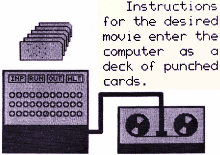News Briefs
|
|
Have you heard of the term "neutrodon?" Not me, until it appeared in this 1964 issue of Radio-Electronics magazine's "News Briefs" section. A neutrodon is a neutralizing capacitor used in vintage tuned radio frequency (TRF) radios based on triode tubes - called neutrodynes - invented by Dr. Louis Alan Hazeltine. The capacitors cancel out the Miller capacitance of high gain vacuum tubes. He founded Hazeltine Corporation, which is now owned by BAE Systems (British Aerospace Electronics - it's amazing how many of our technology companies are owned by foreign entities). Also reported is Dr. Alexander de Seversky, designer and manufacturer of World War I combat biplanes and monoplanes, experimenting with a model "ion-powered craft" - the "Ionocraft" - that floated on a stream of electrons from an emitter grid located below it. Although no details were given, he claimed the craft could fly to altitudes of 60 miles. That height would place the Ionocraft within the ionosphere, where I'm guessing the ambient charges would wreak havoc with the navigation / propulsion system. New Briefs: 11/1957 | 8/1958 | 11/1959 | 2/1960 | 4/1960 | 8/1960 | 3/1961 | 5/1961 | 6/1961 | 12/1961 | 3/1963 | 4/1963 | 8/1963 | 9/1963 | 8/1964 | 12/1964 | 1/1967 | 3/1967 | 4/1967 | 9/1967 | 4/1968 News Briefs
A new type of silicon transistor, described by Richard R. Garnache of Sprague Electric Co., is expected to increase the useful frequency range by a factor of 10. Mr. Garnache said the device has a theoretical upper frequency limit of 20,000 mc, but is not likely to exceed 10,000 mc in its present state of development. The metal-base transistor consists of two layers of single-crystal silicon separated by a layer of metal no more than 100 angstroms thick. It is an invention of Donovan V. Geppert of Stanford Research Institute, and is licensed exclusively to Sprague Electric. Inventor of Neutrodyne Dies at 77
Professor Hazeltine was famous chiefly for his invention in 1923 of the neutrodyne circuit, a means of preventing oscillation in the tuned-radio-frequency receivers of the period. The effect of tube capacitance was balanced out by small capacitors (neutrodons), and the radio-frequency transformers were placed at an angle (55-60 degrees from the vertical) to prevent inductive interaction. Professor Hazeltine sold his patent for $1 million, according to reports - to a group who organized as the Hazeltine Corp. to license manufacturers under the Hazeltine patent. In 1944 Professor Hazeltine retired from the faculty of the Stevens Institute and became a consultant to the Hazeltine Corp. He was also a director of the corporation, retiring 3 years ago. Hazeltine was a Fellow of the Institute of Radio Engineers and president of the institute in 1936. He was also a Fellow of the American Institute of Electrical Engineers, and a member of the American Physical Society. Ion-Powered Craft Could Fly at 300,000 Feet A model ion-powered craft which can lift itself off the ground and rise to a height of 20 feet in the laboratory has been demonstrated by Maj. Alexander P. de Seversky, aircraft designer and inventor. The invention was publicized immediately following issuance of the patent (No. 3,130,945). The Ionocraft, as de Seversky calls it, keeps itself up by the "ionic wind" given off by a plane of emitting electrodes in the form of a mesh of hollow, lightweight rods or crossed wires. Below this plane is another similar one, charged to collect the ions emitted from the mesh above. Air molecules set in motion by the movement of the charged ions supply the lifting force. According to Major de Seversky, the test in an environmental chamber indicates that the lifting force is sufficient to give the Ionocraft a ceiling of approximately 300,000 feet (60 miles) above sea level. A main application of the Ionocraft would be as an antenna. Two such antennas sustained approximately 65 miles high at strategic points in the United States would permit direct TV and radio transmission between New York and Los Angeles. The lonocraft can be used also as an intercontinental ballistic missile interceptor, according to its inventor, who gives a large number of other possible applications. Now - Computer Makes Movies
Delegates at the Joint Computer Conference held recently in Washington, D.C., saw a 17-minute, movie in which the computer itself demonstrated the technique for producing animated movies. The new technique, Dr. Knowlton says, can already be made at a cost that compares favorably with animation by traditional methods. Still experimental, all its possible applications cannot be foreseen, but it should be particularly valuable for educational films.
Posted October 17, 2023 |
|

 Metal Based Transistor Extends Frequency Range
Metal Based Transistor Extends Frequency Range


